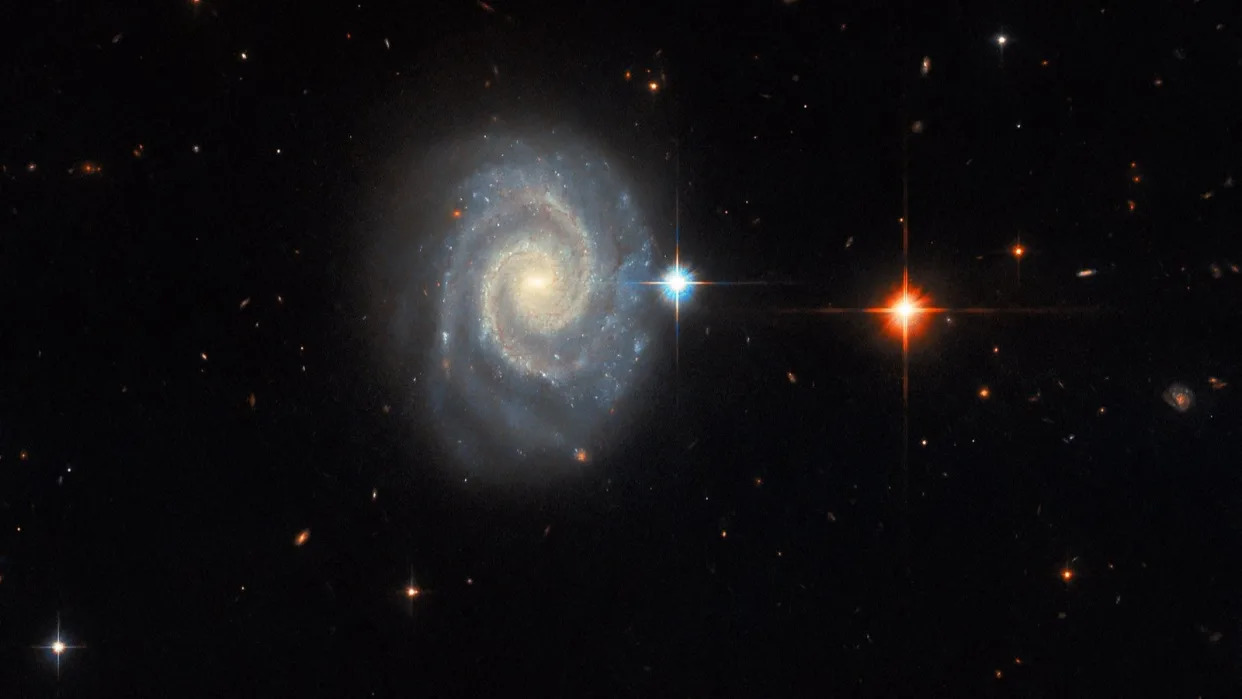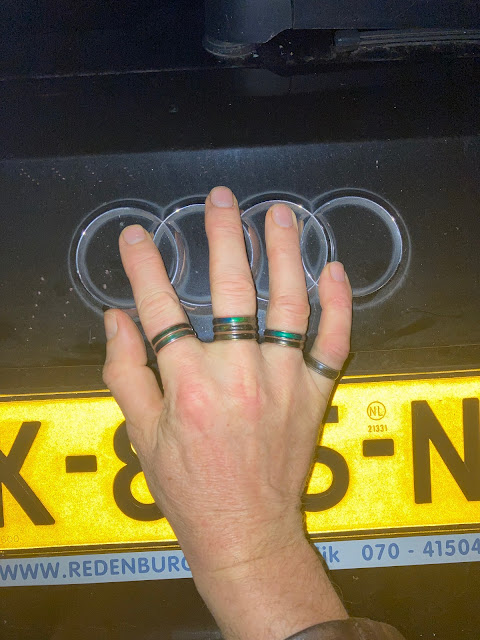NASA's James Webb Space Telescope is revealing new traits about Uranus.
It's the most detailed image yet of the distant planet taken by the powerful telescope.
The image shows the tilted planet's thin rings in "exquisite" detail.
NASA's James Webb Space Telescope has done it again.
An enhanced image from the high-powered telescope orbiting in space shows the planet Uranus in stunning new detail.
The photo captures the icy blue planet's elusive rings, atmospheric storms, and many of its 27 moons.
On Monday, NASA released the image, which expands on a snapshot revealed earlier this year of the icy tilted world.
Webb snapped this image of Uranus and some of the planet's 27 moons, like Puck, Rosalind, and Juliet. NASA, ESA, CSA, STScI
The images are a massive step up from the Hubble Space Telescope's attempt, which can barely make out one faint ring around Uranus.
Scientists said the polar cap becomes "more prominent" when Uranus tilts toward the sun as part of its 21-year-long winter.
The image also shows bright storms just below the cap.
"The number of these storms, and how frequently and where they appear in Uranus's atmosphere, might be due to a combination of seasonal and meteorological effects," NASA said in a press release.
Uranus is an oddball planet
Uranus is an especially odd planet in our solar system because it rotates basically on its side at an angle of 98 degrees.
That gives it the most extreme seasons of any planet in our solar system, per NASA.
For example, a Uranian year lasts about 84 Earth years. Due to Uranus's wonky tilt, the sun only shines on one pole for a quarter of an entire Uranian year, leading to a very long winter that lasts 21 Earth years.
Uranus is approaching a critical moment in its orbit around the sun. In 2028, the planet will reach its next solstice and the north pole will point directly at the sun.
NASA said that astronomers are eager to watch how this transition will transform the planet's storm systems, polar cap, and other features.
Moreover, as Webb continues to peer into the cosmos, new insights from its images of Uranus could help researchers learn more about the peculiar planet's complex atmospheric conditions.
Read the original article on Business Insider
Hubble Telescope captures a galaxy's 'forbidden' light in stunning new image
The spiral galaxy MCG-01-24-014 is located 275 million light-years from Earth. Seen face-on, the galaxy has two prominent, well-defined spiral arms and an energetic glowing core known as an active galactic nucleus. .
The "forbidden" light of a distant spiral galaxy shines brightly in a new image from the Hubble Space Telescope.
Located about 275 million light-years from Earth, the galaxy, called MCG-01-24-014, has two prominent, well-defined spiral arms and an energetic glowing core known as an active galactic nucleus (AGN). The galaxy is seen face-on with its arms creating a nearly perfect circular shape.
MCG-01-24-014 is classified as a Type-2 Seyfert galaxy, which is one of the two largest groups of active galaxies scientists know of, along with quasars. Seyfert galaxies exhibit a characteristic bright core, but are less detectable when compared to quasars — whose incredibly luminous AGNs can outshine the entire host galaxies within which they reside, according to a statement from the European Space Agency (ESA).
Related: The best Hubble Space Telescope images of all time!
Seyfert galaxies can also be further categorized based on the intensity of light being emitted from their active cores. Depending on the wavelengths of light, or spectra, Seyfert galaxies are classified as either Type-1 or Type-2. The latter emit spectral lines associated with so-called "forbidden" emissions, given they should not exist according to certain rules of quantum physics.
"To understand why emitted light from a galaxy could be considered forbidden, it helps to understand why spectra exist in the first place," ESA officials said in the statement. "Spectra look the way they do because certain atoms and molecules will absorb and emit light very reliably at very specific wavelengths."
Electrons — the tiny particles that orbit the nuclei of atoms — lose or gain specific amounts of energy, which correspond to certain light wavelengths being absorbed or emitted. However, certain spectral emission lines are considered to be "forbidden" because they are observed in space but do not occur under normal conditions on Earth.
— This Hubble Telescope view of a chalky spiral galaxy is a sight to behold (photo)
— Hubble Space Telescope discovers 11-billion-year-old galaxy hidden in a quasar's glare
— New Hubble telescope image reveals intergalactic bridge between two merging realms
"Quantum physics is complex, and some of the rules used to predict it use assumptions that suit laboratory conditions here on Earth," ESA officials said in the statement. "Under those rules, this emission is 'forbidden' — so improbable that it’s disregarded. But in space, in the midst of an incredibly energetic galactic core, those assumptions don’t hold anymore, and the ‘forbidden’ light gets a chance to shine out towards us."
Indeed, the bright light from MCG-01-24-014 shines radiantly in the new Hubble photo, which was taken using the telescope's Advanced Camera for Surveys (ACS). The spiral galaxy appears in the center of the image, with two large bright stars in the foreground, one blue and one red, positioned directly above the galaxy itself. Several more distant galaxies are scattered across the otherwise pitch black backdrop of space. ESA released the new Hubble photo online on Dec. 18.



















Geen opmerkingen:
Een reactie posten